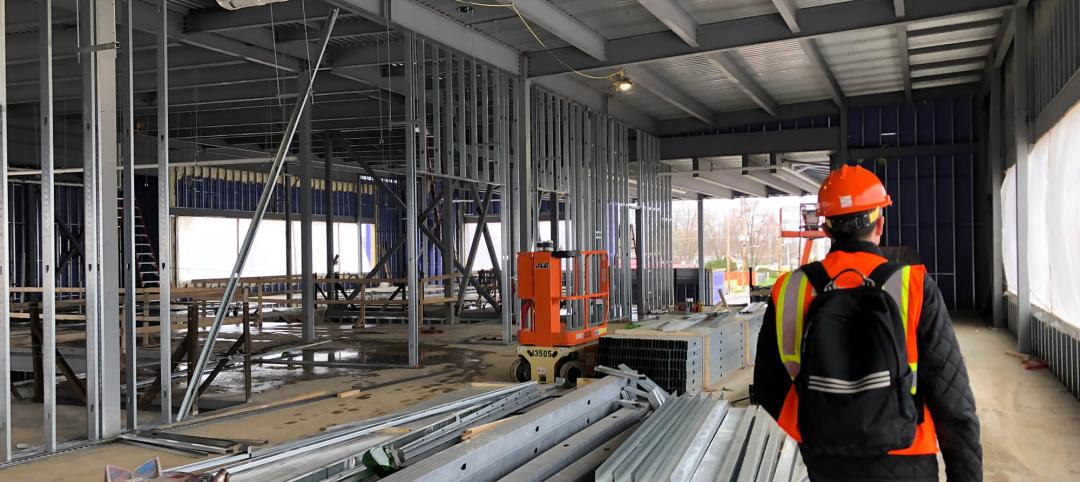Last month, Kraus-Anderson, the construction management and real estate development firm, announced that it had hired Nate Enger as Design Phase Services Manager to act as a go-between for the firm and its architect partners. Enger, an architect himself, has more than two decades of design collaborative expertise, most recently as a partner and vice president with ESG Architecture & Design. He also worked as a senior design architect with Ryan Companies. Enger and Chad Rempe, Kraus-Anderson’s other Design Phase Services Manager, spoke to BD+C via email about their roles. The following is an edited version of that conversation.
BD+C: In your capacity as design phase services manager, you will act as a liaison between Kraus-Anderson’s precon services and the architect-designers it works with on projects. How do you see the scope of your responsibilities?
Enger: We see this role as an opportunity to educate and align the team with holistic project goals, which include architecture, but also focus on finding ways for the full project team to innovate outside of the constraints of traditional project delivery methodology. My role will be to help catalyze collaboration during the formative phases of the project to realize value for our owners, and to help foster a culture of mutual project ownership among project teams.
Why did the firm feel the need to bring on a design-phase service manager at this time?
Rempe: Prior to hiring Nate, I've been the only Design Phase Services Manager within our Preconstruction Team. With Nate joining our team, we're doubling our capacity to better serve our clients and project teams in managing the design and preconstruction phase of a project. As a Design Phase Services Manager, Nate will [work with] our project architect/design partners to ensure project teams are aligned on the project goals and objectives, while also ensuring the right resources are engaged at the right time to deliver effective and efficient design.
Aside from Nate, does Kraus-Anderson have any other architects or designers in its employ?
Rempe: Kraus-Anderson does have two additional architects on staff. One works within our Preconstruction Team as a Building Science Manager, and another works as a Strategic Facility Planner.
Aligning designers with firm's project team
Nate, your resume includes stints with architecture and construction firms. How might that background color your perspective about projects and team collaboration?
Enger: I believe the key to successful partnerships is context. Working within both [architects and contractors] gives me unique insight into the objectives and values that drive the two sides of the industry. Knowing what defines success for each of these groups (among the many [factors] that contribute to the design and construction of projects) affords an opportunity to identify common ground and context on which to form a partnership of mutual respect, shared passion, and diversity of thought.
The opportunities and challenges we have as an industry will benefit from a true collaboration that harnesses these varied skillsets under a model that encourages knowledge sharing and innovation, in contrast to an approach of accepting partners as a necessity of the process.
We recently posted an article about a cancer center in California that's being designed and built under a Collaborative Project Delivery contract. Does your hire in any way signal what kinds of project contracts Kraus-Anderson favors, now and in the future?
Enger: I cannot speak specifically to contracts, as often we cannot control the type of contract vehicle that is executed. What I can say is that the intent we have through my hiring and many other exciting changes afoot here at Kraus-Anderson is to provide owners with more comprehensive project evaluation, earlier in the process, utilizing flexible team structures to solve challenges unique to each project. We plan to do this through identifying a shared set of values between ownership and the broad project team, breaking down traditional structures between disciplines that roadblock collaboration and innovation, and providing open, transparent, and timely access to project data as it is developed.
What are the first projects Nate will be working on?
Rempe: A few of the initial projects will be for KA's development team working through conceptual master planning efforts.
Related Stories
Airports | Jun 3, 2024
SOM unveils ‘branching’ structural design for new Satellite Concourse 1 at O’Hare Airport
The Chicago Department of Aviation has revealed the design for Satellite Concourse 1 at O’Hare International Airport, one of the nation’s business airports. Designed by Skidmore, Owings & Merrill (SOM), with Ross Barney Architects, Juan Gabriel Moreno Architects (JGMA), and Arup, the concourse will be the first new building in the Terminal Area Program, the largest concourse area expansion and revitalization in the airport’s almost seven-decade history.
Construction Costs | Jun 3, 2024
Escalation: Predicting project costs in a volatile market
Thad Berkes, Chief Cost Estimator, Design Collaborative, shares that one of the major hurdles that Design Collaborative attempts to forecast for its commercial construction projects is escalation.
Multifamily Housing | Jun 3, 2024
Grassroots groups becoming a force in housing advocacy
A growing movement of grassroots organizing to support new housing construction is having an impact in city halls across the country. Fed up with high housing costs and the commonly hostile reception to new housing proposals, advocacy groups have sprung up in many communities to attend public meetings to speak in support of developments.
MFPRO+ News | Jun 3, 2024
New York’s office to residential conversion program draws interest from 64 owners
New York City’s Office Conversion Accelerator Program has been contacted by the owners of 64 commercial buildings interested in converting their properties to residential use.
MFPRO+ News | Jun 3, 2024
Seattle mayor wants to scale back energy code to spur more housing construction
Seattle’s mayor recently proposed that the city scale back a scheduled revamping of its building energy code to help boost housing production. The proposal would halt an update to the city’s multifamily and commercial building energy code that is scheduled to take effect later this year.
Mass Timber | May 31, 2024
Mass timber a big part of Western Washington University’s net-zero ambitions
Western Washington University, in Bellingham, Wash., 90 miles from Seattle, is in the process of expanding its ABET-accredited programs for electrical engineering, computer engineering and science, and energy science. As part of that process, the university is building Kaiser Borsari Hall, the 54,000-sf new home for those academic disciplines that will include teaching labs, research labs, classrooms, collaborative spaces, and administrative offices.
Construction Costs | May 31, 2024
Despite challenges, 2024 construction material prices continue to stabilize
Gordian’s Q2 2024 Quarterly Construction Cost Insights Report indicates that supply chain issues notwithstanding, many commodities are exhibiting price normalization.
University Buildings | May 30, 2024
Washington University School of Medicine opens one of the world’s largest neuroscience research buildings
In St. Louis’ Cortex Innovation District, Washington University School of Medicine recently opened its new Jeffrey T. Fort Neuroscience Research Building. Designed by CannonDesign and Perkins&Will, the 11-story, 609,000-sf facility is one of the largest neuroscience buildings in the world.
Affordable Housing | May 30, 2024
General contractor’s keys to a successful affordable housing project
General contractors can have tremendous influence over a project’s success in terms of schedule, budget, and quality. However, to ensure a project is put on this path, there are a few factors that must be considered.
MFPRO+ New Projects | May 29, 2024
Two San Francisco multifamily high rises install onsite water recycling systems
Two high-rise apartment buildings in San Francisco have installed onsite water recycling systems that will reuse a total of 3.9 million gallons of wastewater annually. The recycled water will be used for toilet flushing, cooling towers, and landscape irrigation to significantly reduce water usage in both buildings.

















